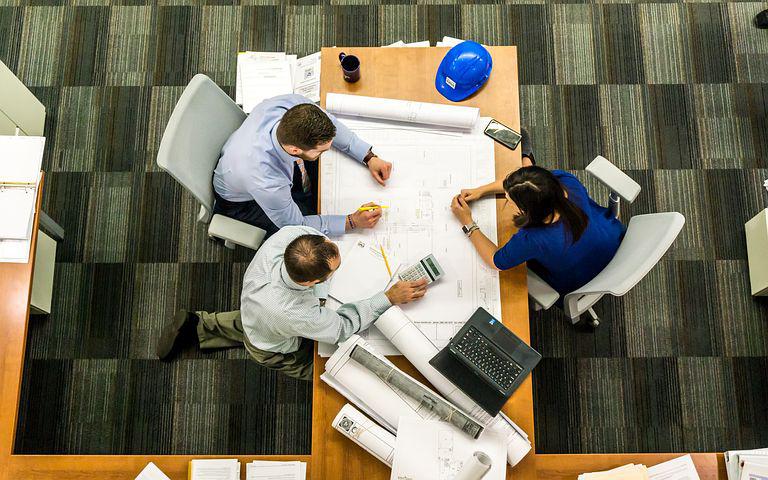
After adjusting to working remotely for the past year, it’s about time to head back to work. In some cases, some people have already returned. In either case, it’s not going to be a smooth transition. Some people would prefer to continue working from home — while others may still be concerned about their safety. The good news, though, is that the following strategies can be used to get you excited about work after COVID.
Overcome your anxiety.
“So much has changed since March 2020,” says Kate Sweeny, professor of psychology and Teresa and Byron Pollitt Endowed Term Chair. “For many of us, one change has involved learning to work from home rather than going to an office every day.”
Initially, the pandemic may have been quite stressful. Still, thankfully, those who survived have been able to adjust and become comfortable staying at home most of the time – or at least relatively so, says Sweeny. “Perhaps unsurprisingly, then, many people are feeling anxious as they look ahead to a time when they have to return to the office, returning to once-comfortable but now unfamiliar routines.”
“My research on the psychology of stressful uncertainty reveals several ways of managing these anxieties.”
The first thing you should do is plan ahead so that you gain control over the future. Some suggestions would be going over your work wardrobe, dusting off your daily planner, or finding a new recipe to pack for lunch. These are important things to plan before going back to work after covid.
Secondly, you can see the good in returning to work to boost your hope and optimism and calm your fears. Have you missed any coworkers? Are there any old routines that will provide comfort? That could be anything from grabbing a latte at your favorite coffee shop to getting dressed to listening to a podcast during your commute.
“Finally, if all else fails, you can find challenging, engaging activities to absorb your attention,” suggests Sweeny. This is a process called “flow,“ and it can “help pass the time pleasantly while you wait for the ‘old normal’ to return.”
Remember the “why.”
“When people have to do something they feel anxious about, it can help to know there’s a good reason behind it,” writes Amy Gallo for HBR. “If the senior leaders at your company haven’t clearly articulated why it’s important people come back to the office, you may need to fill that gap.”
“Communicate the vision from upper management so employees see it as reasonable and can get out on board. If they don’t buy-in, it’s going to feel like coercion,” says Jacob Hirsh, an associate professor at the University of Toronto. “What’s the value proposition for going back in? What is in it for the employees? Will they strengthen their relationships with their coworkers? Will it lessen work-life conflicts if there are clearer boundaries? It can be perceived as a loss so reframe it as to what they will gain.”
You should also let your team know that this wasn’t a hasty decision. “They need to see that there’s a competent and well-thought-out plan,” Hirsh says. The plan should also take their needs into account. For example, you might say something like, “We understand that some of you have reservations, and those make sense. To address those, we’ve….” Again, you want people to feel heard and considered.
Find meaningful work.
What if you’re in a leadership position? What if it hasn’t been articulated that you will or won’t return to the workplace? You can find meaningful work by;
- Identify the parts of your job that you enjoy and what you’re passionate about.
- Use the alignment triangle. To align these three concepts, one must consider three elements: passion, values, and gifts (or what many refer to as talents and skills).
- You can turn your current job into one you genuinely enjoy by implementing a job crafting strategy. How is that possible? You can do this by modifying your job description so that it is meaningful. The result will be greater happiness and engagement at work.
- Seek autonomy, such as being able to work when you’re most productive.
- Ask others, like ” What am I good at?” or “What’s the purpose of my work?”
Harness the power of hybrid work.
Microsoft’s Work Trend Index, which surveyed more than 30,000 people globally, found that 40% of those surveyed were considering leaving their employers this year. So it’s clear that employers are under tremendous pressure to adapt to changing expectations after covid.
What matters is not whether or not flexible work is possible in the future, but whether and how employers support employees. For example, Nielsen’s Total Audience Report for August 2020 indicated that 80% of respondents would prefer to work for a firm that would let them choose where they would work.
Work-from-home (WFH) arrangements offer more flexibility, autonomy, and (theoretically) more time for personal responsibilities. But, on the flip side, WFH results in a decrease in trust within the workplace. And, people still value face-to-face meetings and interacting with colleagues.
The solution? A hybrid work model where you occasionally work on-site, while other times you would work from home — or wherever you want. Besides offering the best of both worlds, hybrid work increases productivity and can help everyone ease their way back into position.
Reunite with colleagues.
According to Gensler’s research, interacting with colleagues is what employees have missed the miss most. However, some extroverts will find this reason enough to get excited about returning to the office.
In a world where we see a decrease in office occupancy, relying on interactions during breaks and at coffee, stations are no longer sufficient to spur innovation. Due to the more flexible schedules and seating available in your workplace, you’ll need to find new, creative ways to facilitate team building.
Providing new amenities or forms of recreation at your office is one suggestion. Another is scheduling catered lunches or volunteering together at a local charity. You might even want to explore cross-functionality so that everyone has a chance to interact with people from various departments and backgrounds.
It’s important not to overlook the fun part, gatherings like office parties — when it’s safe, of course. But, even simple opportunities for reuniting and connecting will motivate employees to return to work. And, having people return and take part in in-person meetings will create a sense of FOMO.
However, just note that there might still be some awkwardness and conflict. Some of us may have to work on learning how to socialize again with others. This resocialization is much more authentic in such a polarizing time politically and socially.
Foster healthy competition.
A healthy competitive environment can also inject a whole lot of excitement and efficiency back into the workplace after covid. Team members who have benchmarks for performance and are rewarded for exceptional performances motivate themselves to give their best. This also stimulates them to come up with new ideas. Exercises that help build team spirit and encourage competition are a great way to keep their spirits high.
In teams where employees return after a long absence, it’s imperative to foster competition while maintaining team unity. By appreciating their abilities and besting their past performances, you can promote fair competition.
Perks
A tried and true strategy in keeping people happy and engaged is through workplace perks. In fact, an employee survey found 48% would consider company benefits, including snacks, when choosing a new job.
Besides refreshments, consider the following perks;
- Recognition programs
- Flexible work schedule
- Vacation or paid time off
- Health and wellness programs, like gym memberships or access to apps like Calm
- Employee discounts and rewards
- 401 (k) plan, pension, or other retirement plans
- Tuition reimbursement
- Stock options
- Childcare assistance
Development opportunities after covid.
One of the significant drawbacks of remote work reported over the past year has been a lack of professional development opportunities. You can use this to your advantage and have your office become a business networking and seminar center. For instance, a regular company-wide training program at your company headquarters makes everyone feel more connected.
The opportunity to learn and grow is significant for Millennials and Gen Z. In fact, a Gallup survey showed 59% of Millennials value learning opportunities and growth when applying for jobs.
Furthermore, a survey conducted by CNBC showed that 9 out of 10 employees who have a mentor say they are happier with their jobs. You can also provide mentorship programs in your office so that your employees can find mentors, whether they are formal or informal.
Spruce up the workspace.
You don’t have to completely redo the workplace after covid, like painting the walls or adding more windows. Instead, you could simply invest in a standing desk or just adding more plants. Plants have been shown to have many benefits, including increasing productivity, improving health, and creating a more inviting workspace.
Image credit: Ylanite Koppens; pexels; Thanks!
Getting Excited About Work After COVID was originally published on Calendar by John Hall.

